Lockheed Martin X-35 JSF
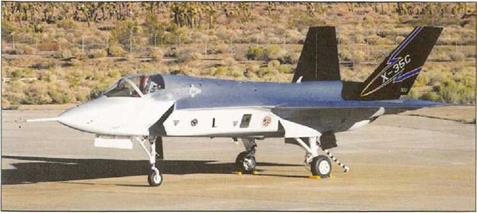
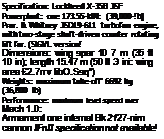 |
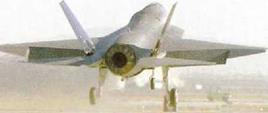 |
|
T |
he US Joint Strike Fighter {JSF! programme is
an ambitious effort to develop a replacement for an entire generation of USAF, US Navy and US Marine Corps aircraft using ore common ‘stealthy’ airframe. The JSF is earmarked to replace the F-16, F/A-18, AV-8B and other types in the US inventory, and will also be exportable to customers worldwide. The JSF has its loots ir a number of studies for advanced, affordable combat aircraft that were launched in the early 1990s These were merged into the JAST (Joint Advanced Strike Technology) programme in 1995, which later became JSF.
Three contractors – Boeing, Lockheed Martin and McDonnell Douglas – were selected by the US DoD to submit JSF designs. In November 1996 Boeing and Lockheed Martin were chosen to build two demonstrator aircraft, essentially JSF prototypes, to conduct a Concept Demonstration Program. At the end of this period one contractor would be chosen to build its JSF design. Lockheed Martin’s CDP aircraft was given the designation X-35.
While the JSF concept demands a common airframe, there will be different versions for the three main US users. The USAF and the US Navy are looking for a conventional take-off and landing (CTOU capability, though Navy CV aircraft will have to be modified for carrier operations. The Marines need aircraft with short take-off and vertical landing (STOVL) capability to replace the Harrier, so the USMC’s JSF variant will have to have a modified
The CV-configured X 35C is similar to the CTOL X-35A, but has larger wings and empennage, a refuelling probe, re-inforced landing gear and a booh,
propu sion system, for vertical lift. Britain’s Fleet Air Arm (Royal Navy) has also signed up to acquire the STOVL JSF to replace its Sea Harriers.
Lockheed has built tnree CDP a rcraft. The CT0L X-35A the STOVL X-35B and the CV X-35C. The X-35A made Its maiden flight on 24 October 2000, the X-35C flew next on 16 December 2000. In March 2001 the X-38B completed its ‘hover pit’ testing, in preparation for its first flight. The X-35 design is more conventional than Boeing’s rival X-32, but Lockheed as adopted a completely new propulsion solution. The X 35B’s -611 STOVL engine uses a vectoring lift fan for vertical flight which can be coupled/decoup’led to/from the main engine using a gear/clutch mechanism. The engine also has a swivelling exhaust nozzle, and bifurcated intakes (between which the lift fan is positioned.
A decision date on the winning design has been delayed several times, but is now planned before the end of 2001. The first operational JSFs are expected to be the Marines’ STOVL variants in 2008. followed by the CTOL aircraft in 2010.
Lockheed Martin’s X-35 design looks very different to the the rival Boeing X-32 – but both aircraft must meet the same mission requirements.
|
T |
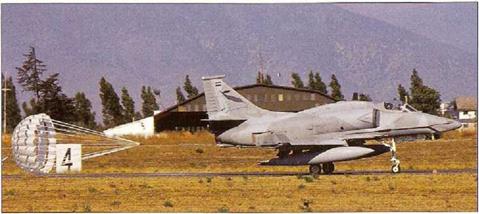 |
he Douglas A-4 Skyhawk first ‘lew in prototype form on 22 June 1954, and entered service in Octobe’ 1956. It provided the US Navy end the US Marine Corps with their principal light attack platform for over 20 years Total production of all varisnts reached 2,960. Early models comprised the J65-powereo A-4A, A-4B and A-4C (differing in avionics and engine power), and the the J52- engined A-4E, and A-4F with a dorsal avionics hump. Export mode! s included the A-4G (Australia), A-4H (Israel). A-4K (New Zealand), A-4PTM (Malaysia), A-4S (Singapore) and A-4KU (Kuwait). The A-4L was a rebuilt A-4C for the USN Reserve. The ast major p’oduction model was the A-4M, based on the A-4F but with a J52-P-408A engine and new canopy. A-4lls for Israel were similar, bux featured uprated avionics, including a HUD.
Skyhawks bore the brunt of the naval air war in Vietnam, flying the most missions and suffering the heaviest osses. A-4s have also seen combat with Israel, Argentina and Indonesia.
The TA-4F two-seat variant came along late, but was used first as a FAC by the USMC and later as the main jet trainer for the USN. It features two cockpits in tandem with a single canopy. The USMC’s OA-4IVI was a specialised two-seater used
Argentina acquired 32 rebuilt and upgraded A-4ARs between 1997 and 2000. They are fitted with a version of the APG-66 multi-mode radar, theARG-1.
for FAC duties. The definitive TA-4J trainer was a simplried TA-4F which usually lacked cannon armament and combat capability. The last USN Training Command A-4s were retired in 1999, but one squadron retains TA-4Js for adversary and fleet support duties.
Although Australia. Malaysia and Kuwait have retired their A-4s, the other export users continue to operate them. New Zealand bougntthe remaining A-4Gs and upgradec them with the APG-66 raoar, new avionics, AIM-9L Sidewinder and Maverick – missile capabi ity, under project Kahu. The Argentine air force bought surplus A-4/OA-AMs and also upgraded them as the A-4AR Fightinghawk, Brazil bought the former-Kuwaiti T/A-4KUs for service on its recently acquired former-French aircraft carder Foch (now renamed Sao Paulo) as the AF-1A and AF-1B.
Singapo’e has the most highly modified Skyhawks, having upgraded surplus A-4B/Cs as A-4Ss and TA-4Ss trainers with seperate rear canopes. These aircraft were first upgraded to T/A-4S-1 Super Skyhawk standard, re-engined with the GE F404 turbofan. A follow-on upgrade brought them up to T/A-4SU Super Skyhawk standard, with a new digital avionics suite.
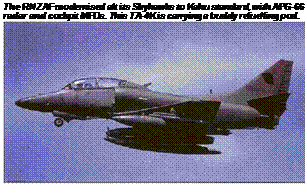 Specification: McDonnell Douglas A-4M Skyhawk II
Specification: McDonnell Douglas A-4M Skyhawk II
Powerplant: one 50-kN (11.280-lb) Pratt & Whitney J52-P-40S non-afterburning turbojet Dimensions: w ig span 8.38 m (27 ft б in); lennth 12.72 m (41 ft 8M in) height 457 m (14 ft Ш inf
Weights: operating amply 4747 kg (10,250 lb): maximum Luke-off і0206 kg 124,COO lb) Performance: maxinun level spaed 1102 knrh 685 rriph); service uei ing 12190 m (40.000 ft); combat radius 547 km (346 miles! with a 18′ 4-kg (4,000-lb) war bad Armament: two h/k 12 20-ГЛГП cannon, maximum ordnance 4153 kg (9,155 lb)
(( _ _ United States










